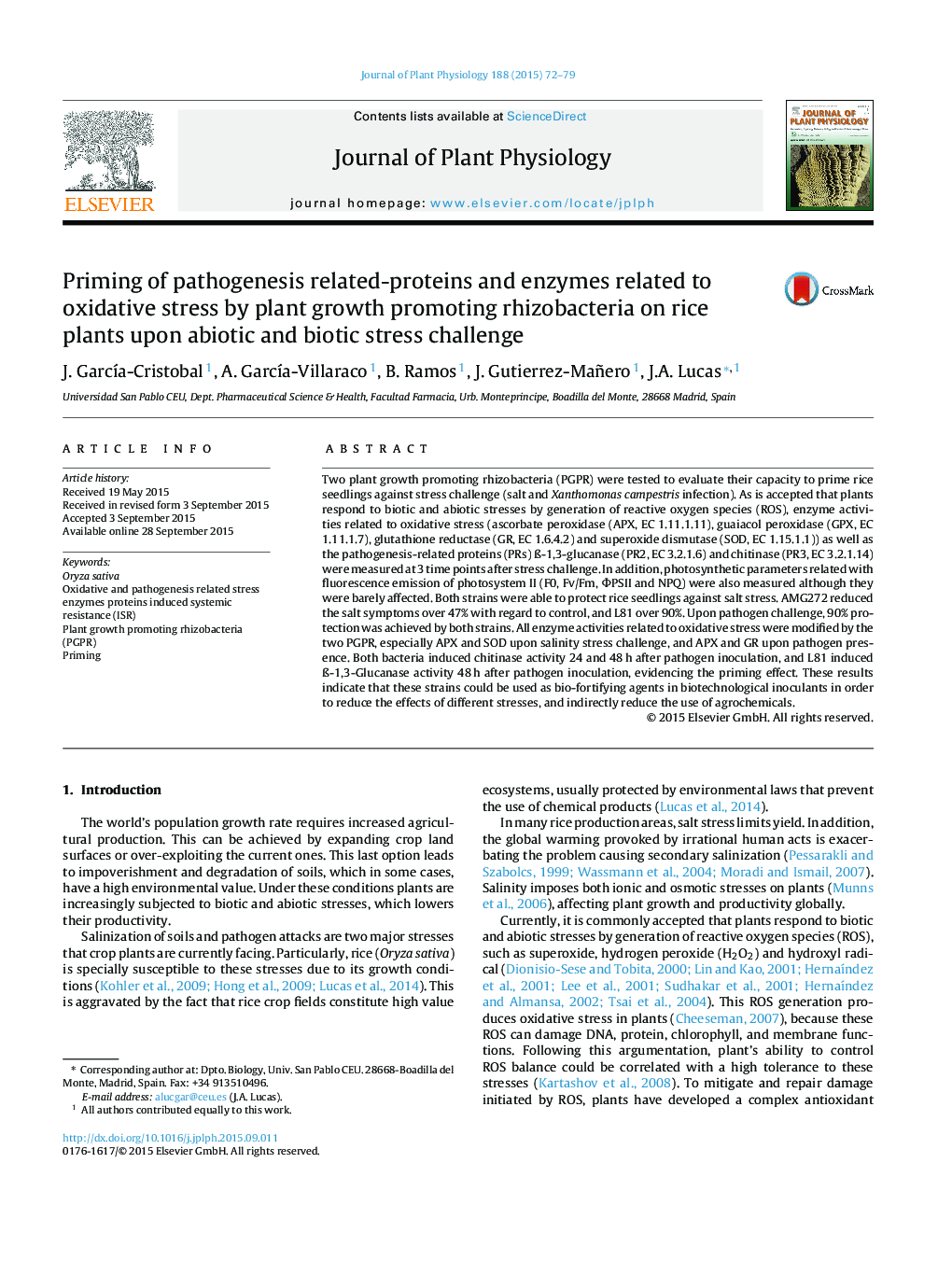| کد مقاله | کد نشریه | سال انتشار | مقاله انگلیسی | نسخه تمام متن |
|---|---|---|---|---|
| 2055563 | 1543889 | 2015 | 8 صفحه PDF | دانلود رایگان |
Two plant growth promoting rhizobacteria (PGPR) were tested to evaluate their capacity to prime rice seedlings against stress challenge (salt and Xanthomonas campestris infection). As is accepted that plants respond to biotic and abiotic stresses by generation of reactive oxygen species (ROS), enzyme activities related to oxidative stress (ascorbate peroxidase (APX, EC 1.11.1.11), guaiacol peroxidase (GPX, EC 1.11.1.7), glutathione reductase (GR, EC 1.6.4.2) and superoxide dismutase (SOD, EC 1.15.1.1)) as well as the pathogenesis-related proteins (PRs) ß-1,3-glucanase (PR2, EC 3.2.1.6) and chitinase (PR3, EC 3.2.1.14) were measured at 3 time points after stress challenge. In addition, photosynthetic parameters related with fluorescence emission of photosystem II (F0, Fv/Fm, ΦPSII and NPQ) were also measured although they were barely affected. Both strains were able to protect rice seedlings against salt stress. AMG272 reduced the salt symptoms over 47% with regard to control, and L81 over 90%. Upon pathogen challenge, 90% protection was achieved by both strains. All enzyme activities related to oxidative stress were modified by the two PGPR, especially APX and SOD upon salinity stress challenge, and APX and GR upon pathogen presence. Both bacteria induced chitinase activity 24 and 48 h after pathogen inoculation, and L81 induced ß-1,3-Glucanase activity 48 h after pathogen inoculation, evidencing the priming effect. These results indicate that these strains could be used as bio-fortifying agents in biotechnological inoculants in order to reduce the effects of different stresses, and indirectly reduce the use of agrochemicals.
Journal: Journal of Plant Physiology - Volume 188, 1 September 2015, Pages 72–79
